#Images de Savoie
Text
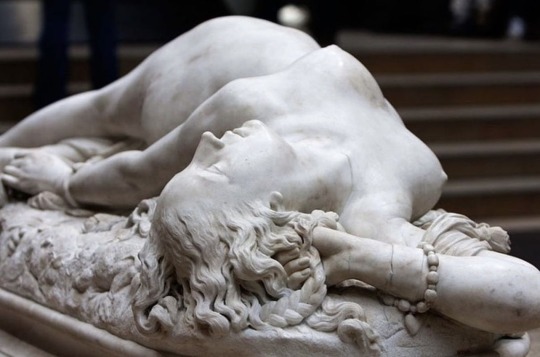




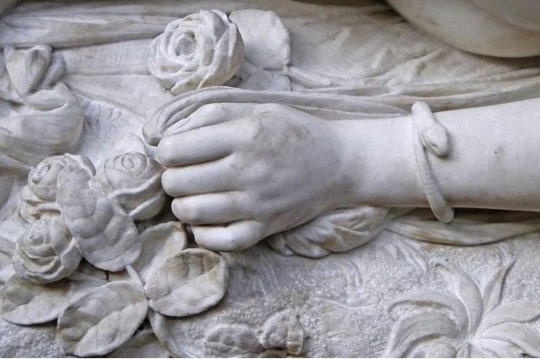

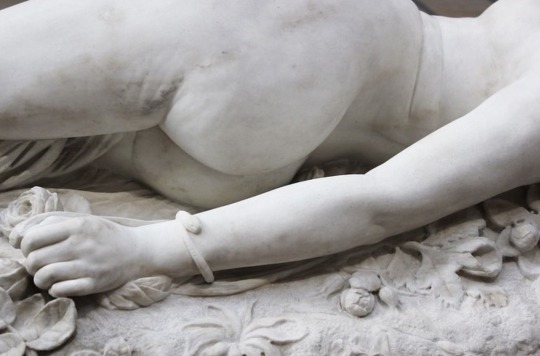


Woman Bitten by a Serpent, by Clésinger…...
This captivating marble carving caused a great scandal in the 1847 Parisian Salon. A suggestive image of a naked woman writhing from the pain of a bite inflicted by the snake twisted around her wrist, or that may be just a cover story for something else? Scandalous like few, critics claimed that this masterpiece was produced from a life cast of the commissioner's mistress, Apollonie Sabatier
- also muse to Baudelaire and known as "La Présidente" - as to claim the artist was lazy, unskilled and immodest, and pointed to the dimpled flesh at the top of her thighs to strengthen their point. Proof that there is no such a thing as bad publicity, Clésinger had his friend Theophile Gauter orchestrate the scandal to grow the sculpture's success.
Auguste Jean-Baptiste Clésinger
(1814-1883) was a painter and sculptor known for the sensuality of his works. Trained by his father, also a celebrated sculptor belonging to the Besancon school of painting, he began exhibiting in the Parisian Salon in 1843 and earned immediate success. He produced plenty of acclaimed busts, such as those of Rachel Félix, Louis of Savoy and his dear friend Theophile Gautier.
His works are displayed in places of the highest distinction such as the Jardin du Luxembourg and the Musee d'Orsay in Paris, and was much admired for the funerary monument of Chopin in the Pere Lachaise Cemetery, where he is buried himself, along with many others. After a failed marriage he met his model and mistress Berthe de Courrière, to whom he was still devoted until the end of his life. He received the Légion d'honneur in 1849.
• Height: 56,5 cm (22.2 in). Width: 180 cm (71 in). Marble, 1847.
fIr Musée d'Orsay, Paris.
#art#beauty#photography#vintage#black and white#60s style#the paradigm web#painting#abstraction#nude figure
312 notes
·
View notes
Text
THIS DAY IN GAY HISTORY
based on: The White Crane Institute's 'Gay Wisdom', Gay Birthdays, Gay For Today, Famous GLBT, glbt-Gay Encylopedia, Today in Gay History, Wikipedia, and more … January 20



c.275 AD. – St. Sebastian was born in the 3rd century AD. We know the date, but not the year. He is the patron saint of archers because he was bound to a stake and shot with arrows. He is also the patron saint of soldiers. As a beautiful young man he was the favorite of the emperor Diocletian who turned against him for embracing Christianity.
Some tales speculate that the Emperor Diocletian made romantic advances upon Sebastian and was enraged when Sebastian rejected him on Christian grounds. Other stories actually refer to Sebastian as the emperor's lover. Whether or not such accounts are legitimate, the image of St. Sebastian has been linked to homoeroticism.
According to the Church's official Acta Sanctorum, Sebastian, serving under the emperors Diocletian and Maximian, came to the rescue of Christian soldiers, Marcellinus and Mark, and thereby confessed his own Christianity. Diocletian insisted that Sebastian be shot to death by his fellow archers; these orders were followed, and Sebastian was left for dead.
These details—based on accounts written centuries after Sebastian's death and therefore largely apocryphal—may have helped form Sebastian's subsequent reputation as a homosexual martyr since his story constitutes a kind of "coming out" tale followed by his survival of an execution that may be read symbolically as a penetration.
In the Renaissance, Sebastian emerged as an extraordinarily popular subject for painters, perhaps rivaled only by Jesus and Mary; he was especially prized by artists who saw in the young saint a figure of Hellenic loveliness. Numerous painters—Tintoretto, Mantegna, Titian, Guido Reni, Giorgione, Perugino, Botticelli, Bazzi ("Il Sodoma")—recast Sebastian as a martyr beatifically receptive to his arrow-ridden fate.
It was primarily the Renaissance depiction of Sebastian that served a later, explicitly homosexual cult of St. Sebastian that took hold with remarkable force beginning in the nineteenth century, with Sebastian as an modern emblem of both a homoerotically charged object of desire and a source of solace for the rejected homosexual.


1900 – British actor Colin Clive (d.1937) is born in Saint-Malo, France to an English colonel, Colin Philip Greig, and his wife, Caroline Margaret Lugard Clive. He attended Stonyhurst College and subsequently Royal Military Academy Sandhurst, where an injured knee disqualified him from military service and contributed to his becoming a stage actor. Clive studied acting, and replaced Laurence Olivier in the stage play, Journey’s End, in 1927.
James Whale was the director of Journey's End. The two struck up an intimate relationship, and Clive played the lead in Journey’s End when it moved to the Savoy Theater in London in 1928. Clive was embraced by Whale’s theatrical friends including actress Elsa Lanchester. He followed Whale to New York City and Whale facilitated the casting of Clive in the movie version of the play.
Journey’s End was Clive’s first of 18 feature films. Clive appeared on Broadway in Overture. When the play closed, he went to London and starred with Elsa Lanchester in The Stronger Sex.
Clive is perhaps best known for playing the role of Dr. Henry Frankenstein in the James Whale-directed Frankenstein (1931) and in the Bride of Frankenstein (1935) with his friend Elsa Lanchester.
Though Clive was gay, he married actress Jeanne de Casalis in 1929, but the marriage was one of convenience, and they separated a short time later.
Clive was a member of the Brit ex-patriot actors in Hollywood including Lanchester, Karloff and Charles Laughton, and remained close with Whale.
The actor struggled with his sexual identity and suffered alcoholism and depression from an early age. His drinking became more and more problematic professionally. He often came to work drunk and passed out on the set. He was even fired from a starring role in a film when he suffered a breakdown.
Clive’s final film was in 1937, The Woman I Love. Colin Clive died on June 25, 1937, of tuberculosis complicated by chronic alcoholism. He was 37 years old. Actress Mae Clarke, one of his leading ladies, said, "Colin was the handsomest man I ever saw and also the saddest."


1971 – Darren Main is a yoga teacher and author currently living in San Francisco. He has written largely about Eastern spirituality for a more modern and Western audience. Main is best known for his second book, Yoga and the Path of the Urban Mystic. He has written several other books: Inner Tranquility: A Guide to Seated Meditation", "Spiritual Journeys Along the Yellow Brick Road"; a controversial book, "Hearts and Minds: Talking to Christians About Homosexuality" and "The Yogi Entrepreneur: a Guide to Earning a Mindful Living Through Yoga." Main's writing has been translated in various languages and several of his books have been released in numerous editions.
Main also maintains a podcast called "Inquire Within" in which he interviews various individuals on topics such as healing, spiritualism, and social activism.Main was born in Westerly, RI. He is the single father to an adopted son.
Main's adolescent years were "filled with pain, rage and confusion" which led to drug abuse and depression. After a suicide attempt, Main claimed to have had a spiritual awakening. This spiritual awakening led Main to Alcoholics Anonymous and to Narcotics Anonymous and to Hatha Yoga and Meditation. Main also became a student of A Course in Miracles.
Main studied Social Work at Mohegan community College, Community College of Rhode Island and at Rhode Island College. He also studied massage therapy at the Bancroft School of Massage Therapy in Worcester, MA and trained to become a yoga and meditation instructor at The Kripalu Center in Lenox, MA.
Main began teaching yoga in Providence, RI in 1992. He spent a year teaching in Bozeman, MT in 1993. Main moved to San Francisco, CA in 1994 where he currently teaches. In 1998, Main opened a San Francisco yoga studio, Castro Yoga with David Nelson. In 2000, Castro Yoga closed and Main began teaching for San Francisco’s largest yoga studio,Yoga Tree. In addition to his weekly yoga classes and various workshops, Main is also the Director of Yoga Tree's Teacher Training program. His books have become required text in a number of yoga teacher certification programs throughout the United States.
Shortly after his first book was released in 1999, Main began teaching throughout the United States and internationally.
Main teaches one of the largest weekly yoga classes in the world at San Francisco's iconic Grace Cathedral. This donation-based yoga class features renowned recording artists and musicians playing live music and attracts as many as 700 students per week. The class has been featured in local as well as national press and has been criticized by some conservative Christian groups.
In April 2006, Main founded a Naked Yoga for Men group in San Francisco and began teaching naked yoga (for men) at Mission Yoga.
Main also writes articles and has contributed to Gay.com, White Crain Journal and the Kaiser Permanente HIV Update Newsletter.


1974 – Michael Stabile is an American journalist and documentary filmmaker best known for his work in and about the pornography industry. His work has appeared in Playboy, The Daily Beast, Buzzfeed and Salon.com. In 2004, he and Jack Shamama co-created the gay pornographic soap opera Wet Palms for which they won a GayVN Award for Best Screenplay. He has also written several other GayVN-nominated movies including Spokes III, Cross Country, and Master of the House. Two of the films were included in "Top 10 Gay Porn Movies of the Decade" by Gawker Media's Fleshbot with credit given to the writing team of Stabile and Shamama.Since 2003, Stabile has edited Gay Porn Blog and in 2005 became producer of The Tim and Roma Show, a web-based talk show about the gay adult industry. In 2008, Stabile launched gay news site TheSword.com. He has been named "an arbiter of taste for gay porn" by the Village Voice.
Stabile has also been featured in the San Francisco Bay Guardian, the San Francisco Chronicle, Gay.com, Time Out, Cybersocket, and the Huffington Post.Stabile is working with Shamama and cinematographer Ben Leon on Seed Money, a documentary about Falcon Studios' founder and GLBT philanthropist Chuck Holmes, currently in production. Their documentary short, Smut Capital of America premiered at the 2011 Tribeca Film Festival on April 24, 2011. In late 2011, Stabile began working with Warhol Superstar Holly Woodlawn on a documentary about her life.


1979 – Will Young is an English singer and actor. He catapulted to fame in 2002 after winning the inaugural UK Pop Idol contest. He has continued to work in music, and also as an actor.
Contrary to popular belief, Will did not come from behind to win the contest. After having beaten the widely-accepted frontrunner Gareth Gates in the final show, it emerged that he had in fact gained the most votes in six out of the nine weeks of the live show.
Young's first single was a double A-side featuring Evergreen and Anything Is Possible. In March 2002 this became the fastest-selling debut in UK chart history, selling 403,027 copies on its day of release (1,108,659 copies in its first week). It went on to sell over 1.7 million copies, and in the official list of the all-time best-selling singles in the UK issued later that year it was 11th. On 31 December 2009, Radio 1 confirmed that Anything Is Possible/Evergreen was the biggest selling single of the 2000s decade in the United Kingdom.
Young subsequently revealed that he was gay, in order to pre-empt a tabloid newspaper that was preparing to run a story 'outing' him. He also stated that he had never hidden, and was comfortable with, his sexuality.
Later in the year, Young met comedian David Walliams and the pair became good friends, with Young appearing at the Little Britain live stage show in Manchester, and later recording a podcast with Walliams, in which they chatted about various aspects of Young's career.
Will added acting to his repertoire when he accepted a role in the BBC film Mrs Henderson Presents, starring Judi Dench and Bob Hoskins. The film was released in the UK in November 2005 to excellent reviews — not least for Young's performance as both actor and singer in the film.


1980 – Yusaf Mack is an American professional boxer. He has held regional titles from the USBA (Now the IBF), NABA, UBA, and NABF. Mack has fought several former world champions, including Alejandro Berrio, Glen Johnson and Carl Froch.
Mack made his professional boxing debut at middleweight on November 17, 2000 in Biloxi, Mississippi. In his first 24 fights, Mack compiled a record of 22-0 with two draws. Throughout his early fights Mack moved between the middleweight, super middleweight, and light heavyweight divisions.
Mack is a father of ten children and was engaged to a woman. In 2015, he appeared in a Dawgpoundusa.com production titled Holiday Hump'n along with gay pornographic actors Bamm Bamm and Young Buck under the name Philly. He initially claimed he had been drugged by the film's producers and had no recollection of making the film, but later told WTXF-TV that he was gay and had lied to cover that up.
Yusaf later had a "coming out party" at Rage nightclub in Weho, a longtime landmark on the L.A. gay scene.

Today's Gay Wisdom
For The Straight Folks Who Don't Mind Gays But Wish They Weren't So BLATANT
by Pat Parker
You know, some people got a lot of nerve.
Sometimes I don't believe the things I see and hear.
Have you met the woman who's shocked by two women kissing
and in the same breath, tells you she is pregnant?
BUT gays, shouldn't be so blatant.
Or this straight couple sits next to you in a movie and
you can't hear the dialogue because of the sound effects.
BUT gays shouldn't be so blatant.
And the woman in your office spends an entire lunch hour
talking about her new bikini drawers and how much
her husband likes them.
BUT gays shouldn't be so blatant.
Or the "hip" chick in your class rattling like a mile a minute
while you're trying to get stoned in the john, about the
camping trip she took with her musician boyfriend.
BUT gays shouldn't be so blatant.
You go in a public bathroom and all over the walls there's John loves
Mary, Janice digs Richard, Pepe loves Delores, etc., etc.
BUT gays shouldn't be so blatant.
Or your go to an amusement park and there's a tunnel of love
and pictures of straights painted on the front and grinning
couples are coming in and out.
BUT gays shouldn't be so blatant.
Fact is, blatant heterosexuals are all over the place.
Supermarkets, movies, on your job, in church, in books, on television every day
day and night, every place - even in gay bars and they want gay
men and woman to go and hide in the closet.
So to you straight folks I say, "Sure, I'll go if you go too"
BUT I'm polite, so, after you.


9 notes
·
View notes
Text


Thursday January 21, 1965, actress Jane Fonda, in a Chanel suit at the Savoy Hotel in London on the occasion of the promotion of her latest film, "Circle of Love" aka La Ronde (original French title), directed by Roger Vadim.
Jeudi 21 janvier 1965, l'actrice Jane Fonda, en tailleur Chanel à l'hôtel Savoy à Londres à l'occasion de la promotion de son dernier film, " Circle of Love" aka La Ronde (titre français original), réalisé par Roger Vadim.
(Photo by Carl Bruin/Mirrorpix/Getty Images)
#jane fonda#american actress#fashion icon#roger vadim#chanel suit#1965#january 1965#style 60s#london#savoy hotel#circle of love#la ronde
23 notes
·
View notes
Photo
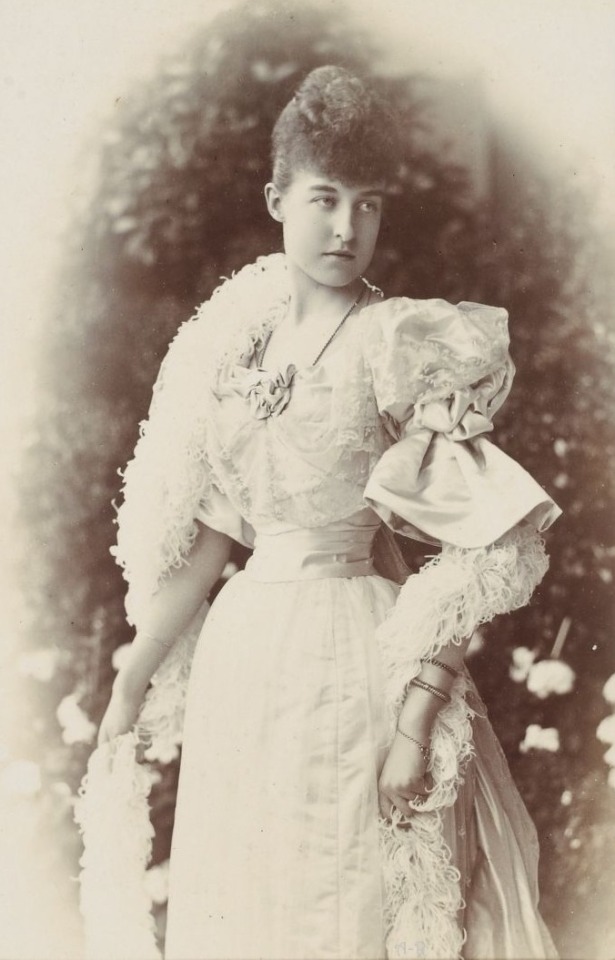

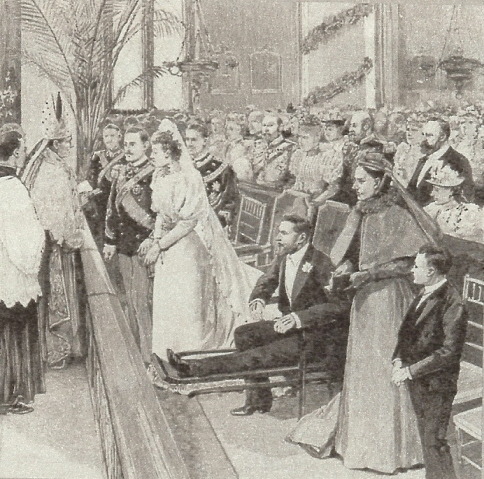
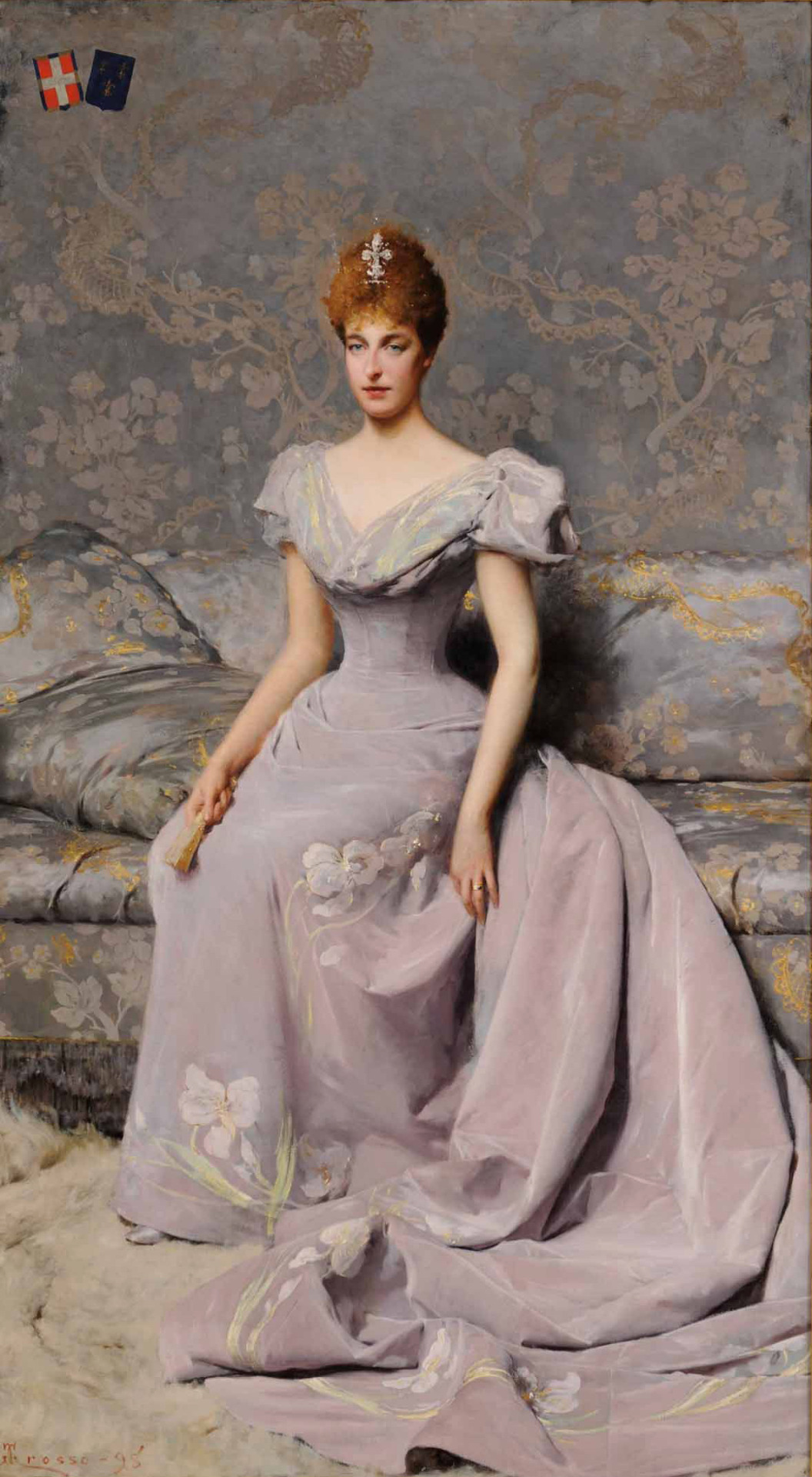
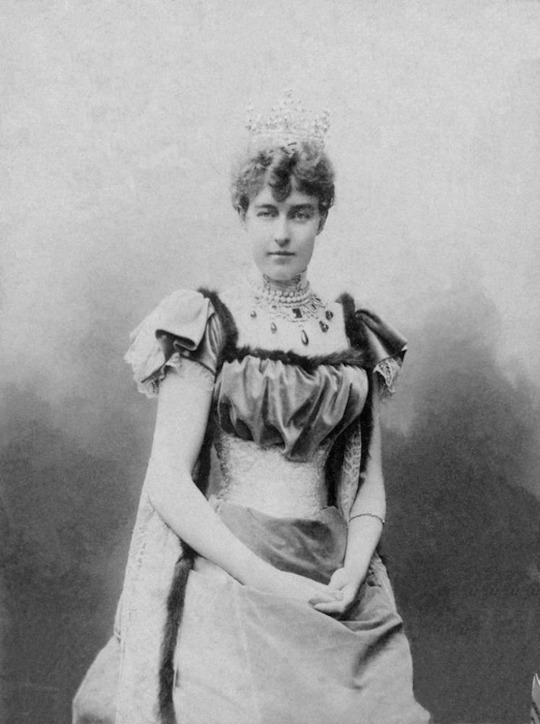
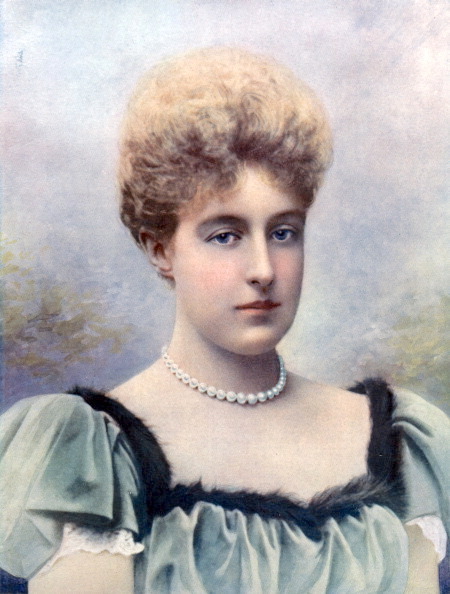

More Hélène of Orléans, Duchess of Aosta (from top to bottom) -
Princess Helene of Orléans by ?. From antique-royals.tumblr.com/post/110099659143/princess-helene-of-orleans 676X1055.
1895 Hélène d'Orléans on her wedding day by ?. Posted to Foro Dinastias by Minnie on 1 November 2009; removed mono-color tint 623X951. Geri Walton (geriwalton.com/princess-helene-of-orleans-potential-suitors-wedding-trousseau/) quoted the Gloucester Citizen: “The bridal dress shows her to be extremely tall, and is placed on a dressmaker’s lay figure. It also shows her to be very slight. Old Orleanists say the Princess has the figure of her grandmother, the late Duchesse d’Orleans. The wedding dress is of thick creamy white faille, rather lack lustre. The edge of the skirt is bordered with a garland of orange blossoms. The train is not made to be supported by bridesmaids, but is three yards long, and is lined with white moiré, which throws it well out from the figure. The corsage is made a little in the blouse style, with three deep pleats in back and front. It looks loose thought a close fit, and has a kind of ruff arrangement round the neck formed of finely pleated white silk gauze, dotted with orange blossoms and supported with a number of bows of white faille ribbon. This part is very light and graceful, and will look well round a swan-like neck. The sleeves fit closely to the fore-arm, and gigots above the elbow. They are not at all so ample as sleeves now generally are. The veil is nearly three yards long and two wide, and will fall over the whole dress. The arms of France and Savoy are brought into this design. The wreath of orange blossoms from which it will fall is arranged like a diadem, and must add to the impression of height.”
1895 Hélène d'Orléans, duchesse d'Aosta wedding. I found this before I recorded sources of images 484X479.
1898 Princess Hélène of Orléans, Duchess of Aosta by Giacomo Grosso (Castello de La Mandria - Venaria Reale, Torino, Piemonte, Italy). From history-of-fashion.tumblr.com/image/632517363094405120 1178X2142.
1900s Helene, Duchess of Aosta, neé Princess d´Orleans. From carolathhabsburg.tumblr.com/page/74; fixed spots w Pshop and removed mono-color tint 1044X1400.
Hélène, Duchess of Aosta color image. From Google search 450X594.
ca. 1898 Duchess Hélène of Aosta, shortly after the birth of her first son. From hmn.wiki/ru/Princess_Hélène_of_Orléans 1280X1974.
#1890s fashion#late Victorian fashion#Belle Époque fashion#Edwardian fashion#Hélène d'Orléans#bun#leg-o-mutton sleeves#lace bertha#flared cuffs#waist band#close skirt#wedding dress#hair flowers#clerical neckline#fan-front bodice#veil#Giacomo Grosso#hair jewelry#V neckline#train#tiara#square neckline#fur-trimmed neckline#fur-trimmed train#lace cuffs#fur coat
17 notes
·
View notes
Photo

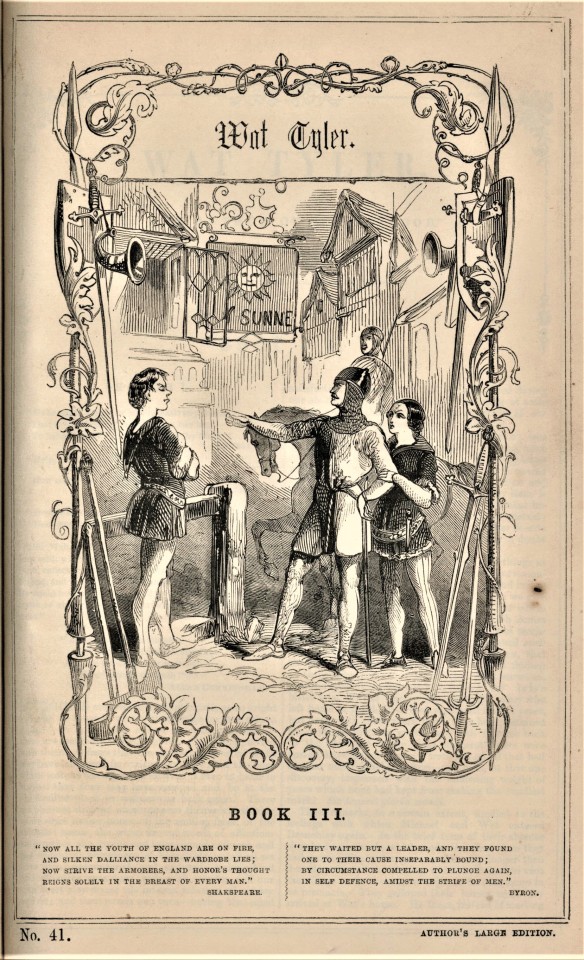




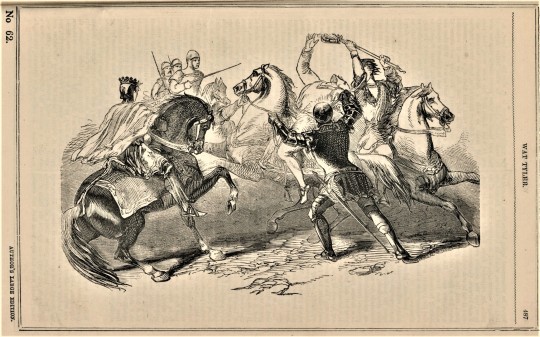
Milestone Monday, Peasants’ Revolt!
On this day, June the thirteenth, in 1381, as many as sixty thousand peasant rebels streamed into London, destroying the Savoy Palace, freeing prisoners, killing as many royals and government officials as possible, and causing general mayhem. The rebellion was in part a response to a recently imposed poll tax, and a more general revolt against the feudal order as workers found themselves in greater demand following the destruction of the Black Death. They were led by a man known as Wat Tyler. Not much is known about Tyler (like whether Tyler was his surname or if he was a roof tiler, or where and when he was born). What we do know is that Tyler arose as a de facto leader of the rebels and represented the group in talks with Richard III. We also know he was gravely wounded during his second parlay with the king, managed to get to a hospital, but was rooted out by the Mayor of London and publicly beheaded.
The work shown here is a 19th-century sensationalist narrative of Wat Tyler by the English serial writer and novelist Pierce Egan the Younger, with 65 engraved illustrations by the American artist William H. Thwaites. Egan’s father, Pierce Egan, Sr., a well-known sports journalist, was the author of Boxiana, our copy of which we have highlighted a couple of times.
Egan the Younger was liberal, even radical in his republican politics, which is reflected in this narrative. Egan has Tyler state that he wants to “effect a grand moral revolution” in favor of parliamentary representation and equality before the law, and against an oppressive and unjust aristocracy. When Tyler makes his decision to lead the uprising, Egan has Tyler’s fellow conspirator Jack Straw respond, “Merry England shall once again be the merry happy place she was ere these grasping heartless nobles turned it from a paradise to a vale of misery.”
Wat Tyler was originally serialized and then published in 1841 in three volumes as a follow-up to his successful 1838-1840 serialization of Robin Hood and Little John. Egan originally wrote Wat Tyler as a narrative of another anti-monarchist, Oliver Cromwell, but when he learned that someone else was about to publish a book about Cromwell, Egan simply changed the characters and setting to the 14th-century Peasants’ Revolt. Our copy is an 1851 reprinting of the first edition, an “Author’s Large Edition,” printed in London by William Spencer Johnson and sold in London by Simpkin & Marshall, in Edinburgh by Oliver and Boyd and John Menzies, and in Dublin by William Curry, Jr. & Co.
Click on the images to view the captions.
View our other Milestone Monday posts.
-- Olivia, Special Collections Graduate Intern
#Milestone Monday#milestones#Peasants' Revolt#Wat Tyler#Pierce Egan the Younger#William H. Thwaites#William Spencer Johnson#engravings#serialization#serialized novels#historical fiction#Olivia
37 notes
·
View notes
Text
Claude de France
Claude de France (1499-1524)
Queen of France, duchess of Brittany, countess of Blois, first consort of King Francis I

The "good queen" Claude- today overshadowed by her husband King Francis I- was born in 1499 to Queen Anne de Bretagne and her second husband Louis XII. Bonfires signaled rejoicing throughout the realm for, with the help of Saint Claude, a viable child had been born. The princess, although not the desired son, was fashioned in her mother's pious image to become both sovereign duchess of Brittany and empress (she was engaged to the future Charles V at age two) or queen (of France, as her father, before her first birthday, had secretly declared). A decade later, her sole sibling, Renée de France, the remarkable future Protestant Duchess of Ferrara, would again owe her name to another saintly protector of women in search of a child. Thus if Queen Claude inherited Queen Anne's limp, her ability to bear relatively healthy offspring was entirely her own. Her engagement in 1506 and her marriage in 1514 consolidated the first prince of the blood's claim to the throne, but after seven debilitating pregnancies in ten years (Louise, Charlotte, François, Henri, Madeleine, Charles, Marguerite), the tired body of this honored "daughter, wife and mother" of kings collapsed at the tender age of 24.
The canonization of Francis of Paola (1519) promoted by Claude and her mother-in-law Louise de Savoie in gratitude for protection from illness and the births of namesake male heirs, betrays the inextricable intertwining of the two sides of the royal family, programmed from 1498. Claude's parents willfully empowered their female progeny; thus when King Francis I descended into Italy the first year of their respective reigns, the pageantry in Lyon depicted him entering Milan to "defend the rights of the two daughters of France." Although a princess raised to be queen, Claude learned to share her husband with other women, and her power and its public expression with strong female kin, especially Louise de Savoie, named regent in her stead, and her sister-in-law Marguerite de Navarre. Legend and neglect have imposed the image of an ever-with-child, sweet, and submissive queen. Yet this eloquent and cultivated bearer of legitimacy commanded respect and carved out a space of her own in the cities of the realm (the townspeople cast her as Justice and Wise Counsel), in her duchy of Brittany and in her Loire Valley territories, especially at the castle of Blois. Shortly after his accession, her husband flaunted his monogram "F" and his emblem, the salamander, on the spectacular new façades of the castle of Blois's "wing of Francis I"; but on the cornice and ceremonial staircase and over the fireplaces, these cohabitated with his consort's at what was in fact her regal home. Here and elsewhere, her emblems- the ermine, occasionally on a leash with the motto A ma vie (To my life), her knotted rope, her swan pierced by an arrow, and her full moon with the device Candida candidis (candid for the candid)- called attention to the queen.

A primer made for this daughter of privilege stages her with her sister Renée, as children tutored by Saint Anne and under the protection of Saint Claude, while learning to read and write; and learning came to be a feature at the heart of the queen's persona. Following her accession in 1515, Claude became mistress of the castle of Blois with its royal library, her mother's manuscripts probably among its precious volumes, to which the king, in an incident of 1516, did not have a key. Her Book of Prayers, by the "Master of Queen Claude", returns to the then commonly depicted theme of Saint Anne as educator, but its pages are uncommonly packed with illuminations in which books form an insistent leitmotiv [..] Tapestries depicting scenes from Christine de Pizan's City of Ladies, these too inherited from her mother, hung into the rooms of the castles of Amboise and/or Blois, frequented by her twelve ladies-in-waiting (including Anne Boleyn and Diane de Poitiers). The writer Anne de Graville commissioned a picture of herself offering her mistress Claude one of the works she dedicated to her, thereby providing us with a rare inside vision of the city of ladies surrounding Claude.
In a final act of independence, the queen bequeathed Brittany not to her husband but to her son, the dauphin. Rather than willfulness, though, sensitivity to the plight of her subjects had colored numerous episodes of her life. During her entry into Nantes in 1518, when the town offered her a costly heart of gold flanked with ermine, she promptly gave it back. Shortly before her death she endowed the building of a cemetary in a suburb of Blois for those who had succumbed to the plague. Such symbolic gestures, combining strength and humility, help us to comprehend why the memory of the short-lived Claude lingered on. Miracles were said to occur around her body, laid to rest in her parents' chapel of Saint Calais in 1524. Subsequently, her second son, King Henri II (of the seven siblings, only he and his sister Marguerite, future duchesse de Savoie, outlived their father) immortalized her on a monumental tomb at Saint-Denis. And in her Book of Hours, Catherine de Médicis inserted Claude's portrait near that of Eleonora of Austria, Francis I's second wife, forging an unexpected double embodiment of a powerful queenly ideal.
Kathleen Wilson-Chevalier- Encyclopedia of Women in the Renaissance
#xvi#kathleen wilson chevalier#encyclopedia of women in the renaissance#claude de france#princesses of france#queens of france#duchesse de bretagne#anne de bretagne#louis xii#renée de france#françois i#dauphin françois#françois iii de bretagne#henri ii#marguerite de france duchesse de savoie#catherine de medicis#éléonore d'autriche
8 notes
·
View notes
Text
La compensation écologique permet-elle vraiment de tendre vers l’absence de perte nette de biodiversité ?
See on Scoop.it - Biodiversité - @ZEHUB on Twitter
Depuis 2016, le droit français poursuit un objectif de non perte nette de biodiversité en imposant aux projets ayant des incidences sur la biodiversité d’éviter, de réduire, puis de compenser ces incidences. Les mesures compensatoires doivent générer des gains écologiques suffisants, ce qui suppose qu’elles soient réalisées sur des sites en mauvais état écologique.
Brian Padilla, Salomée Gelot, Adrien Guette et Jonathan Carruthers-Jones
Cybergeo: European Journal of Geography [En ligne], Environnement, Nature, Paysage, document 1060, mis en ligne le 15 février 2024
"Cet article analyse le contexte écologique dans lequel ont été réalisées 1153 mesures compensatoires, entre 2017 et 2021, sur le territoire hexagonal français. En utilisant des données de la "naturalité potentielle de France métropolitaine", nous comparons d’une part les scores d’intégrité biophysique des sites choisis et d’autre part les scores de qualité écologique incluant un indice de connectivité du paysage autour des sites, par rapport aux scores nationaux. Nos résultats montrent que 64 % de la surface des sites de compensation se situe sur des espaces où le score d’intégrité biophysique est supérieur à la médiane française, et que 40 % se situe sur des espaces où il est supérieur au dernier quartile. En revanche, la majorité des sites de compensation se trouve dans des paysages présentant une qualité écologique inférieure à celle du territoire hexagonal. Ces résultats suggèrent que la stratégie de localisation des mesures compensatoires ne vise pas prioritairement à générer un gain écologique important, mais répond à d’autres contraintes économiques et foncières. Cela questionne l’efficacité de la compensation à tendre vers l’absence de perte nette de biodiversité."
[Image] Illustration des données d’intégrité biophysique et de continuités spatiales sur un territoire comportant des mesures compensatoires
Légende
a. À gauche, la carte du gradient d’intégrité biophysique croisée avec des sites de compensation en Savoie, à droite, les données d’intégrité biophysique en France métropolitaine.
b. À gauche, la carte des continuités spatiales croisée avec les mêmes sites de compensation en Savoie, à droite, les données de continuité spatiale à l’échelle de la France métropolitaine.
Crédits Données : projet CARTNAT et base GéoMCE Padilla, Gelot, Guetté, Carruthers-Jones, 2023
-------
NDÉ
via Maxime Zucca sur X, 16.02.2024
"Une équipe du MNHN (@PADILLABGabriel et al) vient d'étudier la localisation des 2 840 sites de compensation écologique qui ont été cartographiés en métropole sur Géoportail comme le prévoyait la loi biodiversité de 2016. Ce n'est pas brillant..."
[...]
"Cette étude, comme d'autres avant elle, vient montrer qu'actuellement, la mise en œuvre de la compensation écologique ne permet pas du tout de contribuer à l'objectif "zéro artificialisation nette" : très rares sont les opérations de régénération de milieux artificialisés. 6/6"
https://twitter.com/MaximeZucca/status/1758503381142737143
0 notes
Text
La compensation écologique permet-elle vraiment de tendre vers l’absence de perte nette de biodiversité ?
See on Scoop.it - EntomoNews
Depuis 2016, le droit français poursuit un objectif de non perte nette de biodiversité en imposant aux projets ayant des incidences sur la biodiversité d’éviter, de réduire, puis de compenser ces incidences. Les mesures compensatoires doivent générer des gains écologiques suffisants, ce qui suppose qu’elles soient réalisées sur des sites en mauvais état écologique.
Brian Padilla, Salomée Gelot, Adrien Guette et Jonathan Carruthers-Jones
Cybergeo: European Journal of Geography [En ligne], Environnement, Nature, Paysage, document 1060, mis en ligne le 15 février 2024
"Cet article analyse le contexte écologique dans lequel ont été réalisées 1153 mesures compensatoires, entre 2017 et 2021, sur le territoire hexagonal français. En utilisant des données de la "naturalité potentielle de France métropolitaine", nous comparons d’une part les scores d’intégrité biophysique des sites choisis et d’autre part les scores de qualité écologique incluant un indice de connectivité du paysage autour des sites, par rapport aux scores nationaux. Nos résultats montrent que 64 % de la surface des sites de compensation se situe sur des espaces où le score d’intégrité biophysique est supérieur à la médiane française, et que 40 % se situe sur des espaces où il est supérieur au dernier quartile. En revanche, la majorité des sites de compensation se trouve dans des paysages présentant une qualité écologique inférieure à celle du territoire hexagonal. Ces résultats suggèrent que la stratégie de localisation des mesures compensatoires ne vise pas prioritairement à générer un gain écologique important, mais répond à d’autres contraintes économiques et foncières. Cela questionne l’efficacité de la compensation à tendre vers l’absence de perte nette de biodiversité."
[Image]
Illustration des données d’intégrité biophysique et de continuités spatiales sur un territoire comportant des mesures compensatoires Légende a. À gauche, la carte du gradient d’intégrité biophysique croisée avec des sites de compensation en Savoie, à droite, les données d’intégrité biophysique en France métropolitaine. b. À gauche, la carte des continuités spatiales croisée avec les mêmes sites de compensation en Savoie, à droite, les données de continuité spatiale à l’échelle de la France métropolitaine. Crédits Données : projet CARTNAT et base GéoMCE Padilla, Gelot, Guetté, Carruthers-Jones, 2023
-------
NDÉ
via Maxime Zucca sur X, 16.02.2024
"Une équipe du MNHN (@PADILLABGabriel et al) vient d'étudier la localisation des 2 840 sites de compensation écologique qui ont été cartographiés en métropole sur Géoportail comme le prévoyait la loi biodiversité de 2016. Ce n'est pas brillant..."
[...]
"Cette étude, comme d'autres avant elle, vient montrer qu'actuellement, la mise en œuvre de la compensation écologique ne permet pas du tout de contribuer à l'objectif "zéro artificialisation nette" : très rares sont les opérations de régénération de milieux artificialisés. 6/6"
https://twitter.com/MaximeZucca/status/1758503381142737143
0 notes
Text

“WHEN DISCONTENT WITH MUSEUMS is strong enough to provoke the attempt to exhibit paintings in their original surroundings or in ones similar, in baroque or rococo castles, for instance, the result is even more distressing than when the works are wrenched from their original surroundings and then brought together.” This is Theodor Adorno in his great essay “Valéry Proust Museum,” first published in German in 1955, a moment of reckoning and reconstruction. Though Adorno doesn’t specify why the attempt to return and repatriate is more upsetting than the original rift and reassembling of modernity, it is clear that we are in a similar moment of discontent again today—and that we, too, must consider our desires and the effects they might produce.
RELATED
JANUS DOE
THE POLITICS OF CARE
In May this past year, the director of Florence’s Uffizi, Eike Schmidt, announced a proposal to return a number of the museum’s religious paintings to churches (if not to the exact ones the paintings came from, then at least to similarly Christian places of worship). At first glance, this seemed like a not-terrible idea; after all, I have seen Caravaggio’s Inspiration of Saint Matthew, 1602, tucked into its nook in San Luigi dei Francesi in Rome and felt that awed feeling of witnessing a thing where it was meant to be seen, in situ. Schmidt had apparently absorbed all the postmodern lessons of site specificity, about what is lost when something is picked, pried, or stolen from its original context. (“To remove the work is to destroy the work,” I could almost hear Richard Serra say.) But as I thought more about his proposal, the deep anti-modernism of the gesture struck me: The idea, after all, is not simply to relocate the paintings but to change their natures, transforming them from secular things worthy of contemplation into devotional images deserving of worship. Even if Schmidt is somehow historically right—in other words, even if he is being faithful to how artists intended their work to be seen—he is nevertheless revoking the experience of modernity that has descended upon these paintings.
When a painting was taken off the wall of the church and brought into the gallery of the museum, we were asked to look at it differently than the artist intended. Broken out of its original lifeworld and turned into a fragment (this is the original crime Adorno speaks of), the artwork became secular, a relic of another time and place, patched together with relics from other times and places. (“It would be an act of madness to enter a museum, kneel down before a painting of the virgin to pray for a soldier missing in battle, lighting a candle and leaving an offering on the floor near the picture before leaving,” Philip Fisher noted in 1975.) It is lost and adrift, yes, but it is also transformed, and here we find the other edge of the sword: One begins to draw connections the artist never imagined. That is the quixotic, heady power of the museum, the birth of which, one might go so far as to say, demands the death of the author. No works made before 1860 were meant to be contemplated in quite the same way—as Foucault reminds us, Manet was the first painter to imagine his paintings in the museum—but nothing that goes into it can resist its power. In this sense the museum is akin to the commodity system, another modern invention: Artworks confront all other artworks within its space. Inside, they change orientation, speak differently, take on new lives, assume new values. The viewer is charged with wondering about their potential, purchase, and power.
To describe the Uffizi plan as anti-secular and anti-modern is not to say that every repatriation shares these characteristics. In general, stolen things should be given back, and the past few years have seen many struggles for restitution that are undeniably just. In 2018, scholars Felwine Sarr and Bénédicte Savoy of the Collège de France released a brilliant report, commissioned by President Emmanuel Macron, urging the return of plundered African objects to their native lands: “African cultural heritage can no longer remain a prisoner of European Museums,” Macron’s Twitter account proclaimed. It is hard to argue against this move even if the proposed return is to some extent symbolic, and one might ask if European museums are not also attempting to divest themselves of a troubling colonial history: While France is much less likely to give back all the resources it plundered over the longue durée of colonialism, the return of objects might still pave the way for other forms of remuneration and justice; in their report, Sarr and Savoy note that restitution opens the “question of building bridges for future equitable relations.”
Importantly, they are just as invested in the experience of confronting the objects themselves. As Sarr and Savoy put it, “To fall under the spell of an object, to be touched by it, moved emotionally by a piece of art in a museum, brought to tears of joy, to admire its forms of ingenuity, to like the artworks’ colors, to take a photo of it, to let oneself be transformed by it: All these experiences—which are also forms of access to knowledge—cannot simply be reserved to the inheritors of an asymmetrical history, to the benefactors of an excess of privilege and mobility.” If repatriated objects are unlikely to return to their original contexts, Sarr and Savoy insist, they must be displayed in necessarily “unoriginal” ways—in other words, in a museum.
The museum reveals the artwork’s potential precisely by negating it.
A LOT HAS CHANGED in the past forty or so years. If the postmodernism of the 1980s considered the museum to be in crisis and contemplated its “ruins,” today many see these same institutions as frustratingly intact, as bulwarks against change, citadels to be stormed. (Even ten years ago, the Left’s critique of museums was simply that they had transformed from civic sites to experiential fun houses. “The late-capitalist museum” was understood to be a space of spectacle, not BlackRock lucre.) Where an earlier generation of artists associated with institutional critique pointed to the museum’s genetic incoherence, as well as to the incursion of corporate interests, today the museum itself stands as a purveyor of systemic and symbolic violence. “The very foundation of the museum is carceral and colonial, and thus ableist,” artist Carolyn Lazard claimed in a recent interview. “Once we abandon the solidity of the museums’ justifications for existing, we might be able to invent new forms and new models of making.”
Lazard is not alone in their thinking, but plans of attack have taken different approaches. In a recent exhibition detailing the role of slavery in the British empire and its afterlife in institutions of contemporary art, artist Cameron Rowland mortgaged the mahogany doors and handrails at the Institute of Contemporary Arts, London, installed by the extravagant George IV—thus making a strike against the host institution, while at the same time acknowledging, by staging the exhibition, that the artist is bound to it. (Even as the institution’s hardware remains intact, its value is drained—the site becomes indebted.) And many others, artists and art workers alike, have occupied the museum in similar ways, sometimes to drain it but just as often to reenergize it. One of the most affirming aspects of the protests against Warren Kanders’s trusteeship of New York’s Whitney Museum of American Art, which sprang up around the 2019 Biennial, was how many people claimed the institution as their own and insisted that their voices be heard there too. While the ultimately successful campaign to oust Kanders from the board neither erased his tear gas from the world nor purified the institution, it did mark an ethical position that had potentially political effects: For who, more people might ask, would want to break bread with a person like this?
0 notes
Text
I partially translated a French record from 1711, and I'm proud AF.
A top contributor in one of my genealogical groups on Facebook posted a baptismal record image yesterday. I saw it this morning, and the name rang a bell. I checked my tree on FamilyEcho and, sure enough, I have an 8th great-aunt named Marguerite Brun. I have no personal information about her, only basic familial information.

Image Description: A wooden easel pad stands in the center with an unlined notepad flipped open and draped over it. The title is "What I Do Know" highlighted in violet-red, followed by a list of relatives of Marguerite Brun highlighted in deep mauve.
Mother: Marie Anne Pellerin; Father: Abraham Brun; Maternal Grandmother: Jeanne Savoie; Maternal Grandfather: Etienne Pellerin; Sisters: Marie Madeleine Brun, Marie Josephe Brun, Marie Anne Brun; Brothers: Charles Brun, Joseph Brun; Maternal Stepfather: Laurent Doucet Sr.; Maternal Step-sisters: Marguerite (Doucet) Breau; Maternal Step-brothers: Michel Laurent Doucet, Laurent Doucet Jr.
Image from BeFunky stock images.
Edited by Keekee Smith with BeFunky.
— — — — — — — — —
The baptismal record could be about my 8th great-aunt, but for the sake of certainty, I need to translate the record. The issue is that I haven't spoken, read, or written French in 15+ years and instead began attempting to learn Spanish. I wasn't confident in my ability to translate this, especially since the handwriting of old is notoriously challenging to read anyway.
Thankfully, my experience with reading old, handwritten records and my rusty French pulled through to help me transcribe/translate nearly half of the document. I'm confident of the bulk of the translations, but I'm definitely unsure of a few.
At any rate, I'm proud of myself for what I accomplished with this document, and it helps me to feel more connected to my language, culture, and roots.

Image Description: A document page with faded lines and cursive handwriting in black ink. "1711" and "Marguerite Brun" are scrawled in the left margin. The main body of the document details a baptismal record written in French. The document was signed at the bottom by two individuals.
Image provided by J. D.
— — — — — — — — —
1711 - Marguerite Brun
The 9th of January 1711 __ __
__ __ (fruits?) __ __ has(?)
Port Royal __ baptise with __ ce-
remonies __ __ __ __ cha-
pel of St Laurent of haut de
la Riviere __ __ __
__ Port Royal __ __ __ Mar-
guerite Brun __ __ girl(daughter?) of Abra-
ham Brun and Marie Pellerin __-
__ __. __ __ __ __
godfather Pierre LeBlanc __ __
godmother Magdelaine Pellerin __
of Pierre __ __ __ __ __ __
__ the __ __ the __
__ __ __ __ __. The godfather
and the godmother __ declare(?) __
__ __.
F. Justi(__) Duraud(?)
__ __
#ancestry#genealogy#family#familytree#familyecho#familyhistory#ancestryblog#southwestlouisiana#louisiana#southerner#familyresearch#research#writer#readme#blog#blogger#genealogyblog#translation#French#FrenchtoEnglish#language#culture#roots
0 notes
Video
vimeo
Danse ! Bande annonce du film from Godefroy de MAUPEOU on Vimeo.
En 2012, quatre cents amateurs de l'Ain, de Haute-Savoie et du Grand Genève ont participé au Défilé de la Biennale de la Danse, sous la direction du chorégraphe Bouba Landrille Tchouda. Ce projet chorégraphique s'intitulait " Pluie de Danses ".
Pour la très grande majorité des participants, faire partie d'une chorégraphie était une première.
De 12 à plus de 90 ans ils se sont investis totalement dans ce pari qui est devenu, au fil des mois, une véritable aventure humaine.
Sept ans plus tard, les acteurs de cette expérience se replongent devant les images réalisées alors, et racontent la genèse, les moments forts de " Pluie de Danses " et les transformations que cet événement chorégraphique a apportées dans leurs vies.
0 notes
Text

Isère - Grenoble : J0 2030 : jusqu'à quand la culture du déni ? Quand Grenoble perd, c'est toujours la "faute des autres". Simple rappel historique : 18 mars 2009, Grenoble est candidate pour les JO 2018. Sa candidature arrive en ... 3 ème position juste devant Pelvoux. Elle est devancée par Annecy (23 voix) dans les votes du CNOSF, puis par Nice (10 voix) et enfin Grenoble (9 voix). Le rapport technique du CNOSF est publié : les tableaux comparatifs sont accablants pour Grenoble. A cette époque, faute de regarder les réalités en face, le prétexte c'est le
"règlement de compte politique" : Sarkozy / Destot. Aujourd'hui, Grenoble "refait le match" : ce serait Wauquiez / Piolle. A force de vouloir toujours flatter un patriotisme local, Grenoble se voile la face. Avec la municipalité Piolle, qui a l'honnêteté de dire combien l'image de Grenoble est dégradée, détachée maintenant de toute référence à la montagne ? Qui peut encore sérieusement prétendre que l'Isère est dans la même division que les deux Savoies ? Il suffit de comparer les chiffres des fréquentations des stations et la réalité saute aux visages. Dans son image à l'extérieur, Grenoble est devenue une cité urbaine de "seconde division" exposée aux pires violences urbaines, à la drogue... Bref, là où elle a fait la Une des médias. C'est la réalité à reconnaitre. Cette réalité élimine Grenoble de compétitions de ce type. La seule question, cette réalité est-elle réversible ? Et si oui comment et par quel nouveau Maire ?
03/12/2023
0 notes
Text
Legarda Lineage
Doña Clarita Tambunting Legarda’s father was Don Vicente Lucio Flores Legarda, born Dec. 13, 1873.

Image Credit
Don Vicente was a naval architect, marine engineer, and teacher. He was a Glasgow, Scotland-educated architect who trained under Daniel Hudson Burnham who drew up the city planning maps for Manila and Baguio City, Philippines. In 1902, he taught in San Francisco, USA, and went home on Manila in 1909 to become one of Manila's prominent architects. He died Feb 24, 1956, in Manila, Philippines at age 82. He is buried in Manila, Philippines. His parents were Don Miguel Legarda and Doña Genoveva Flores-Legarda. Don Miguel Legarda was born July 2, 1852 in Binondo, Manila, Philippines.
Don Miguel is the son of Don Benito Pablo Legarda y Lerma and Doña Cirila Tuason de Legarda.
Don Miguel had a brother, Don Cosme Benito Legarda y Tuason, born September 26, 1853 in Binondo, Manila, (died August 15, 1915 at 61 years old in Évian-les-Bains, Haute-Savoie, Auvergne-Rhône-Alpes, France, and buried in Manila, Philippines). Don Cosme Benito was married to Teresa de la Paz de Legarda. He earned a law degree from the University of Santo Tomas, Manila, Philippines, in 1874. He was a politician and lawyer and member of President Emilio Aguinaldo's cabinet at Malolos and vice president of the Filipino Congress 1896-1898. He was Resident Commissioner for the US Congress 1907 – 1913, representing State/Territory: Philippine Islands. (Legarda, Benito, 1853-1915, Biographical Directory of the United States Congress).
From wikipedia:
Benito Cosme Legarda y Tuason (September 27, 1853 – August 27, 1915) was a Filipino legislator who was a member of the Philippine Commission of the American colonial Insular Government, the government's legislature, and later a Resident Commissioner from the Philippine Islands to the United States Congress.
Benito Legarda died on August 27, 1915, in Evian-les-Bains, France. He is buried at the Manila North Cemetery.
The Legardas are considered one of Manila’s oldest families:
Manila’s Original 400 Old Family Names
Doña Teresa de la Paz de Legarda (born October 15, 1841 in Marikina, Manila, Philippines, died April 22, 1890 at 48 in Marikina, Manila, Philippines of Pneumonia) once owned the largest private hacienda in the Philippines in the 1800s and is the ancestor of the Tuason-Legarda-Prieto-Valdes Clan of Manila, Philippines. She was first married to Don Jose Severo Tuason, the son of Don Jose Maria Tuason and Doña Maria Jose Patiño y Tuason.
Don Benito Pablo was born on January 12, 1822 in Zubielqui, Navarra, Navarra, Spain, and died January 15, 1873 at age 51 in Binondo, Manila, Philippines.
Don Benito Pablo is the son of Don Juan Domingo Pablo Legarda Alcaine, born August 12, 1798, in Allín, Navarre, Spain, and Doña Juana Lerma.
Sources:
-The Last Hacendera: Doña Teresa de la Paz, 1841-1890 Luciano P. R. Santiago of Pila, Laguna
-Teresa de la Paz: Feminine Wiles and Family Trees, Filipino Geneology Project. Spanish-Filipino (Mestiza) Ancestry
0 notes
Video
The Baroque Portuguese Roosters - The Missing Porcelain Collection of Queen Dona Amélia by Daniel Arrhakis (2023)
Dona Maria Amélia (French: Marie Amélie Louise Hélène; 28 September 1865 – 25 October 1951) was the last Queen consort of Portugal as the wife of Carlos I of Portugal.
She was regent of Portugal during the absence of her spouse in 1895.
She was the eldest daughter of Prince Philippe, Count of Paris and Princess Marie Isabelle d'Orléans, and a "Princess of Orléans" by birth.
On 22 May 1886, Amélia married Carlos, Prince Royal of Portugal. He was the eldest son of King Luís I of Portugal and Maria Pia of Savoy.
As queen, however, Amelia played a very important role. With her elegance and cultured character, she influenced the Portuguese court.
Interested in eradicating the evils of the time, such as poverty and tuberculosis, she founded dispensaries, sanatoriums, economic kitchens and daycare centers, thus demonstrating her interest in the well-being of the Portuguese population.
However, his best-known works are the foundations of the Instituto de Socorros a Náufragos (in 1892); the Royal Coach Museum (1905); the Pasteur Institute in Portugal (Instituto Câmara Pestana) and the National Assistance for Tuberculosis.
On 1 February 1908, the royal family returned from the palace of Vila Viçosa to Lisbon. They traveled in the royal train to Barreiro and from there took a boat to cross the Tagus River.
They disembarked at Cais das Colunas in the principal square of downtown Lisbon, the Terreiro do Paço.
On their way to the Palace of Necessidades, while crossing the square and turning to the street, several shots were fired from the crowd by at least two men, among others.
The King died immediately, his heir Prince Dom Luís was mortally wounded and Infante Dom Manuel was hit in the arm, yet Queen Amélie surprisingly unharmed trying to defend her youngest son, the new king Manuel II, with the flower bouquet she kept in her hand.
Her reaction at the time of the regicide was to brandish the bouquet of flowers she was carrying in her hand and shout at one of the regicides to back down, an image that made the covers of newspapers across Europe.
The regicide of 1908 plunged her into deep grief, from which D. Amélia never fully recovered. She then retired to the Palácio da Pena, in Sintra, without ceasing, however, to try to support, by all means, her young son, King D. Manuel II.
Manuel II of Portugal was deposed by a military coup, later known as the 5 October 1910 revolution, which resulted in the establishment of the Portuguese First Republic. Queen Amélie left Portugal with the rest of the royal family, embarks in Ericeira on the yacht Amélia, heading for Gibraltar.
She lived decades of suffering in exile, between England and France. During the Second World War the Portuguese government of Salazar invited her to return to Portugal, but she declined the offer replying “In my misfortune, France welcomed me, I will not abandon her in her misfortune”.
She visited Portugal for the last time in 1945. In 1951 at the time of her death, her last words were “Take me to Portugal”. She is buried in the Bragança pantheon, in São Vicente de Fora.
_______________________________________________
In the midst of this tragedy, I decided to create a collection of porcelain roosters in her honor. Whether it exists or not will remain in the secret of History and Stories.
In France since ancient times, the rooster has appeared on Gallic coins and it became a symbol of Gaul and the Gauls.
But also in Portugal since the Middle Ages, with emphasis on the medieval legend of the Rooster of Barcelos.
The rooster is also considered the symbol of Portugal, both because of its rusticity, representing our countryside and because it is traditionally associated with positive things and virtues.
You can find it on many facades of secular churches in Portugal.
Queen Dona Amélia had a very special adoration for porcelain roosters and throughout her life in Portugal between the Palaces of Pena and Vila Viçosa, many evenings were spent drawing and painting , like King D. Carlos.
Her roosters drawn and painted by her were later reproduced by great Portuguese ceramists as unique pieces that were then part of her extensive collection and one of Queen Dona Amélia's best kept secrets.
"My Beautiful Baroque Roosters" as she called them were left behind at the Pena Palace, after her departure into exile, with the exception of a few specimens, which she took on the Dona Amélia Yacht on her initial trip to Gibraltar.
With time and the vicissitudes of the revolutionary times of the First Republic, Queen Dona Amélia's collection of Portuguese Baroque Roosters disappeared without a trace, until today when I present you a glimpse into this collection created in dreams...
Each Rooster has the name of a Portuguese municipality or locality.
I hope you like it ! : )
(via The Baroque Portuguese Roosters - The Missing Porcelain Co… | Flickr)
0 notes
Text
Grille des salaires des conventions collectives du bâtiment en 2023
New Post has been published on https://www.juristique.org/pratique/grille-salaires-conventions-colectives-batiment
Grille des salaires des conventions collectives du bâtiment en 2023
Il existe de très nombreuses conventions collectives applicables dans le secteur du bâtiment selon la catégorie à laquelle appartient le personnel (ouvrier, ETAM et Cadre).
Pour le métier du bâtiment, la convention dépend de l’effectif de l’entreprise « jusqu’à 10 salariés » ou « plus de 10 salariés » même si, aujourd’hui, elles tendent à intégrer des clauses communes sur les salaires minima, les indemnités de repas et les frais de déplacements.
De plus, les grilles des salaires et des indemnités des conventions collectives du bâtiment sont souvent régionales, départementales, voire pour une agglomération ou hors-agglomération.
Télécharger les dernières grilles des salaires des conventions collectives du bâtiment pour 2023
Enfin, il existe des conventions collectives spécifiques pour le secteur du bâtiment pour les départements d’outre-mer.
Sommaire
1 Dernières grilles des salaires de la convention collective des ouvriers des entreprises du bâtiment (jusqu’à 10 salariés) :
2 Dernières grilles des salaires de la convention collective des ouvriers des entreprises du bâtiment (plus de 10 salariés) :
3 Dernières grilles des salaires de la convention collective des ETAM du bâtiment :
4 Foire aux questions (FAQ) les conventions collectives du bâtiment
5 Acheter et télécharger en ligne une convention collective ainsi que les documents obligatoires pour votre entreprise
6 Votre avis sur les conventions collectives du bâtiment et les grilles salariales :
Dernières grilles des salaires de la convention collective des ouvriers des entreprises du bâtiment (jusqu’à 10 salariés) :
.slick-slider#wpsp-113309 margin-left: 0px; .slick-slider#wpsp-113309 .wp-show-posts-inner margin-left: 1em; margin-right: 1em; #wpsp-113309.wpsp-card .wp-show-posts-single margin-bottom: 2em; .slick-slider#wpsp-113309 .wp-show-posts-single margin-bottom: 0px; #wpsp-113309 .wp-show-posts-inner:hover .wp-show-posts-image .wp-show-posts-image-overlay background-color: rgba(252,186,4,0.7) !important; #wpsp-113309 .wp-show-posts-entry-title a color: #1f2641; #wpsp-113309 .wp-show-posts-entry-title a:hover color: #e55934; .wp-show-posts-columns#wpsp-113309 margin-left: -2em; .wp-show-posts-columns#wpsp-113309 .wp-show-posts-inner margin: 0 0 2em 2em;
Indemnités des ouvriers du bâtiment (jusqu’à 10 salariés) de La Loire en 2023
Grille des salaires des ouvriers du bâtiment (jusqu’à 10 salariés) d’Occitanie en 2023
Indemnités des ouvriers du bâtiment (jusqu’à 10 salariés) d’Occitanie en 2023
Indemnités des ouvriers du bâtiment (jusqu’à 10 salariés) d’Auvergne-Rhône-Alpes en 2023
Indemnités des ouvriers du bâtiment (jusqu’à 10 salariés) du Grand Est en 2023
Grille des salaires des ouvriers du bâtiment (jusqu’à 10 salariés) du Grand Est en 2023
Grille des salaires des ouvriers du bâtiment (jusqu’à 10 salariés) d’Auvergne-Rhône-Alpes en 2022
Indemnités des ouvriers du bâtiment (jusqu’à 10 salariés) de Haute-Savoie en 2023
Indemnités des ouvriers du bâtiment (jusqu’à 10 salariés) de l’Ain en 2023
Indemnités des ouvriers du bâtiment (jusqu’à 10 salariés) de Bourgogne-Franche-Comté en 2023
Salaires des ouvriers du bâtiment (jusqu’à 10 salariés) de Bourgogne-Franche-Comté en 2023
Grille des salaires des ouvriers du bâtiment (jusqu’à 10 salariés) du Grand Est en 2022
Indemnités des ouvriers du bâtiment (jusqu’à 10 salariés) de Normandie en 2023
Grille des salaires des ouvriers du bâtiment (jusqu’à 10 salariés) de Normandie en 2023
Indemnités des ouvriers du bâtiment (jusqu’à 10 salariés) de Seine-et-Marne en 2023
Indemnités des ouvriers du bâtiment (jusqu’à 10 salariés) d’Isère en 2023
Indemnités des ouvriers du bâtiment (jusqu’à 10 salariés) des Pays de la Loire en 2022
Indemnités des ouvriers du bâtiment (jusqu’à 10 salariés) d’Occitanie en 2022
Indemnités des ouvriers du bâtiment (jusqu’à 10 salariés) de Savoie en 2023
Indemnités des ouvriers du bâtiment (jusqu’à 10 salariés) d’Île-de-France en 2023
Indemnités des ouvriers du bâtiment (jusqu’à 10 salariés) du Rhône en 2023
Indemnités des ouvriers du bâtiment jusqu’à 10 salariés de Hauts-de-France en 2023
Indemnités des ouvriers du bâtiment (-10 salariés) de Drôme-Ardèche en 2023
Grille des salaires des ouvriers du bâtiment (jusqu’à 10 salariés) de Seine-et-Marne en 2023
Grille des salaires des ouvriers du bâtiment (jusqu’à 10 salariés) d’Occitanie en 2022
Grille des salaires des ouvriers du bâtiment (jusqu’à 10 salariés) du Centre-Val de Loire en 2022
Grille des salaires des ouvriers du bâtiment (jusqu’à 10 salariés) des Pays de la Loire en 2022
Grille des salaires des ouvriers du bâtiment (jusqu’à 10 salariés) d’Auvergne-Rhône-Alpes en 2023
Grille des salaires des ouvriers du bâtiment (jusqu’à 10 salariés) des Hauts-de-France en 2023
Grille des salaires des ouvriers du bâtiment (- 10) d’Île-de-France en 2023
Indemnités des ouvriers du bâtiment (-10 salariés) de Bretagne en 2023
Salaires des ouvriers du bâtiment de Bretagne (jusqu’à 10 salariés) en 2023
Dernières grilles des salaires de la convention collective des ouvriers des entreprises du bâtiment (plus de 10 salariés) :
.slick-slider#wpsp-113311 margin-left: 0px; .slick-slider#wpsp-113311 .wp-show-posts-inner margin-left: 1em; margin-right: 1em; #wpsp-113311.wpsp-card .wp-show-posts-single margin-bottom: 2em; .slick-slider#wpsp-113311 .wp-show-posts-single margin-bottom: 0px; #wpsp-113311 .wp-show-posts-inner:hover .wp-show-posts-image .wp-show-posts-image-overlay background-color: rgba(252,186,4,0.7) !important; #wpsp-113311 .wp-show-posts-entry-title a color: #1f2641; #wpsp-113311 .wp-show-posts-entry-title a:hover color: #e55934; .wp-show-posts-columns#wpsp-113311 margin-left: -2em; .wp-show-posts-columns#wpsp-113311 .wp-show-posts-inner margin: 0 0 2em 2em;
Indemnités des ouvriers du bâtiment (plus de 10 salariés) de la Loire en 2023
Grille des salaires des ouvriers du bâtiment (plus de 10 salariés) d’Occitanie en 2023
Indemnités des ouvriers du bâtiment (de plus de 10 salariés) d’Occitanie en 2023
Indemnités des ouvriers du bâtiment (plus de 10 salariés) d’Auvergne-Rhône-Alpes en 2023
Indemnités des ouvriers du bâtiment (plus de 10 salariés) du Grand Est en 2023
Grille des salaires des ouvriers du bâtiment (plus de 10 salariés) du Grand Est en 2023
Grille des salaires des ouvriers du bâtiment (plus 10 salariés) d’Auvergne-Rhône-Alpes en 2022
Indemnités des ouvriers du bâtiment (plus de 10 salariés) de Haute-Savoie en 2023
Indemnités des ouvriers du bâtiment (plus de 10 salariés) de l’Ain en 2023
Indemnités des ouvriers du bâtiment (plus de 10 salariés) de Bourgogne-Franche-Comté en 2023
Salaires des ouvriers du bâtiment (plus de 10 salariés) de Bourgogne-Franche-Comté en 2023
Grille des salaires des ouvriers du bâtiment (plus de 10 salariés) du Grand Est en 2022
Indemnités des ouvriers du bâtiment (plus de 10 salariés) de Normandie en 2023
Grille des salaires des ouvriers du bâtiment (plus de 10 salariés) de Normandie en 2023
Indemnités des ouvriers du bâtiment (de plus de 10 salariés) de Seine-et-Marne en 2023
Indemnités des ouvriers du bâtiment (plus de 10 salariés) d’Isère en 2023
Indemnités des ouvriers du bâtiment (plus de 10 salariés) de Savoie en 2023
Indemnités des ouvriers du bâtiment (plus de 10 salariés) des Pays de la Loire en 2022
Indemnités des ouvriers du bâtiment (plus de 10 salariés) d’Occitanie en 2022
Indemnités des ouvriers du bâtiment plus de 10 salariés du Rhône en 2023
Indemnités des ouvriers du bâtiment de plus de 10 salariés de Hauts-de-France en 2023
Indemnités des ouvriers du bâtiment de plus de 10 salariés d’Île-de-France en 2023
Indemnités des ouvriers du bâtiment (+10 salariés) de Drôme-Ardèche en 2023
Grille des salaires des ouvriers du bâtiment (plus de 10 salariés) de Seine-et-Marne en 2023
Grille des salaires des ouvriers du bâtiment (plus de 10 salariés) d’Occitanie en 2022
Grille des salaires des ouvriers du bâtiment (plus de 10 salariés) du Centre-Val de Loire en 2022
Grille des salaires des ouvriers du bâtiment (plus de 10 salariés) des Pays de la Loire en 2022
Grille des salaires des ouvriers du bâtiment (plus 10 de salariés) d’Auvergne-Rhône-Alpes en 2023
Grille des salaires des ouvriers du bâtiment (plus de 10 salariés) d’Île-de-France en 2023
Grille des salaires des ouvriers du bâtiment (plus de 10 salariés) des Hauts-de-France en 2023
Indemnités des ouvriers du bâtiment (+10 salariés) de Bretagne en 2023
Salaires des ouvriers du bâtiment (plus de 10 salariés) de Bretagne en 2023
Dernières grilles des salaires de la convention collective des ETAM du bâtiment :
Foire aux questions (FAQ) les conventions collectives du bâtiment
"@context":"https://schema.org","@type":"FAQPage","@id":"https://www.juristique.org/pratique/grille-salaires-conventions-colectives-batiment","mainEntity":["@type":"Question","name":"Quel est le numéro IDCC de la convention collective des ouvriers des entreprises du bâtiment (jusqu’à 10 salariés) ?","acceptedAnswer":"@type":"Answer","text":"Le numéro IDCC de la convention collective des ouvriers des entreprises du bâtiment (jusqu’à 10 salariés) est « 1596 ».","@type":"Question","name":"Quel est le numéro de brochure de la convention collective des ouvriers des entreprises du bâtiment (jusqu’à 10 salariés) ?","acceptedAnswer":"@type":"Answer","text":"Le numéro de brochure de la convention collective des ouvriers des entreprises du bâtiment (jusqu’à 10 salariés) est « 3193 ».","@type":"Question","name":"Quel est le numéro IDCC de la convention collective des ouvriers des entreprises du bâtiment (plus de 10 salariés) ?","acceptedAnswer":"@type":"Answer","text":"Le numéro IDCC de la convention collective des ouvriers des entreprises du bâtiment (plus de 10 salariés) est « 1597 ».","@type":"Question","name":"Quel est le numéro de brochure de la convention collective des ouvriers des entreprises du bâtiment (plus de 10 salariés) ?","acceptedAnswer":"@type":"Answer","text":"Le numéro de brochure de la convention collective des ouvriers des entreprises du bâtiment (plus de 10 salariés) est « 3258 ».","@type":"Question","name":"Quel est le numéro IDCC de la convention collective des ETAM du bâtiment ?","acceptedAnswer":"@type":"Answer","text":"Le numéro IDCC de la convention collective des ETAM du bâtiment est « 2609 ».","@type":"Question","name":"Quel est le numéro de brochure de la convention collective des ETAM du bâtiment ?","acceptedAnswer":"@type":"Answer","text":"Le numéro de brochure de la convention collective des ETAM du bâtiment est « 3002 »."]
Quel est le numéro IDCC de la convention collective des ouvriers des entreprises du bâtiment (jusqu’à 10 salariés) ?
Le numéro IDCC de la convention collective des ouvriers des entreprises du bâtiment (jusqu’à 10 salariés) est « 1596 ».
Quel est le numéro de brochure de la convention collective des ouvriers des entreprises du bâtiment (jusqu’à 10 salariés) ?
Le numéro de brochure de la convention collective des ouvriers des entreprises du bâtiment (jusqu’à 10 salariés) est « 3193 ».
Quel est le numéro IDCC de la convention collective des ouvriers des entreprises du bâtiment (plus de 10 salariés) ?
Le numéro IDCC de la convention collective des ouvriers des entreprises du bâtiment (plus de 10 salariés) est « 1597 ».
Quel est le numéro de brochure de la convention collective des ouvriers des entreprises du bâtiment (plus de 10 salariés) ?
Le numéro de brochure de la convention collective des ouvriers des entreprises du bâtiment (plus de 10 salariés) est « 3258 ».
Quel est le numéro IDCC de la convention collective des ETAM du bâtiment ?
Le numéro IDCC de la convention collective des ETAM du bâtiment est « 2609 ».
Quel est le numéro de brochure de la convention collective des ETAM du bâtiment ?
Le numéro de brochure de la convention collective des ETAM du bâtiment est « 3002 ».
Acheter et télécharger en ligne une convention collective ainsi que les documents obligatoires pour votre entreprise
.slick-slider#wpsp-113103 margin-left: 0px; .slick-slider#wpsp-113103 .wp-show-posts-inner margin-left: 1em; margin-right: 1em; #wpsp-113103.wpsp-card .wp-show-posts-single margin-bottom: 2em; .slick-slider#wpsp-113103 .wp-show-posts-single margin-bottom: 0px; #wpsp-113103 .wp-show-posts-inner:hover .wp-show-posts-image .wp-show-posts-image-overlay background-color: rgba(252,186,4,0.7) !important; #wpsp-113103 .wp-show-posts-entry-title a color: #1f2641; #wpsp-113103 .wp-show-posts-entry-title a:hover color: #e55934; .wp-show-posts-columns#wpsp-113103 margin-left: -2em; .wp-show-posts-columns#wpsp-113103 .wp-show-posts-inner margin: 0 0 2em 2em;
Êtes-vous payé au salaire minimum légal et conventionnel ?
Affichages obligatoires : une nouvelle obligation liée au vapotage
Modèle d’affichage obligatoire en entreprise à télécharger
Modèle de règlement intérieur en entreprise
Où acheter une convention collective en ligne pour votre entreprise ?
Droit du travail : Les documents obligatoires dans l’entreprise
Télécharger une convention collective gratuitement
L’importance de la convention collective pour un employeur
Liste des affichages obligatoires pour les entreprises
Votre avis sur les conventions collectives du bâtiment et les grilles salariales :
Dites-le-nous dans les commentaires. Merci.
0 notes
Photo

Randonnée au Rocher de la Loze depuis Courchevel
#wrap position: relative; padding: 10px; overflow: hidden; #gradient width:100%; height:200px; background: red; /* For browsers that do not support gradients */ background: linear-gradient(rgba(128,128,128,0), rgba(255,255,255,1)); /*Standard*/ position:absolute; bottom:0; left:0; #read-more padding:5px; border-top:4px double #ddd; background:#fff; color:#333; var conditionNotMember=' Notice: Undefined variable: conditionNotMember in /home/clients/f33c737cab7c1dadabdddf727550d75a/web/wp-content/plugins/php-code-for-posts/Classes/Shortcode.php(95) : eval()'d code on line 70 '; var cond2=' Notice: Undefined variable: conditionNoSubscription in /home/clients/f33c737cab7c1dadabdddf727550d75a/web/wp-content/plugins/php-code-for-posts/Classes/Shortcode.php(95) : eval()'d code on line 71 '; // Membership needed messageLogin='Abonné ? Se connecter, Transpiree c'est quoi ? Découvrir'; jQuery(document).ready(function( $ ) // Hover $( "#gallery-1 img" ).hover( function() $( this ).css('opacity', 1); , function() $( this ).css('opacity', 0.6); ); // Opacity $( "#gallery-1 img" ).css('opacity', 0.6); // Remove some images var picturnNb = 0; $('#gallery-1 img').each(function() picturnNb++; if (picturnNb == 10) $(this).attr("src","/ext/protection/MorePictures.jpeg"); $(this).removeAttr("srcset"); if (picturnNb > 10) $(this).remove(); ); $( "#gallery-1 img" ).click(function(event) // Stop default event event.preventDefault(); event.stopPropagation(); // Change image to default warning's one $.swipebox( [ href:'/ext/protection/ConnexionRequise.jpeg', title:'Il faut se connecter' ]); ); var ficheInsideRandonneeLien = $("#ficheInsideRandonneeLien"); var articleBody = $("div[itemprop='articleBody']"); var gallery = $("#gallery-1"); articleBody.attr('id', 'wrap'); // Percent var percent = 35; var diffPercent = 100 - percent; // Compute new height var defHeight = (articleBody.height() - ficheInsideRandonneeLien.height() - gallery.height())*percent/100; articleBody.css('height' , defHeight + 'px'); articleBody.append(''); articleBody.after(''); $('#read-more').append('Déjà '+percent+'% de lu, il reste '+ diffPercent +'%. ' + messageLogin + ''); $('#read-more').after(gallery); ); .img_thumb display:flex; align-items:center; .img_right float:right; .img_left float:left; .centerText text-align: center; border-bottom: 1px solid #e7e6e6; @media all and (min-width: 700px) .img_margin_top margin-top:19px; .img_margin_top_video margin-top:28px; margin-right:10px; @media screen and (max-width: 700px) .img_margin_top margin-top:12px; .img_margin_top_video margin-top:16px; Suisse | Suisse | Rocher de la Loze La randonnée du jour est de monter au Rocher de la Loze, au-dessus de la station de ski de Courchevel (Savoie). La Tania (Courchevel) Il pleut encore le matin et l’option est de prendre la télécabine de La Tania. La surprise est de découvrir qu’elle est gratuite en juillet […]
0 notes
